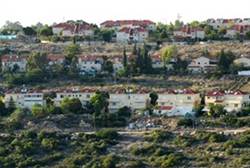Boycott Switzerland’s Migros Supermarket
Switzerland’s largest supermarket chain, Migros, announced on Tuesday that it will tell its customers if products have come from Jewish communities in Judea, Samaria (Shomron) and east Jerusalem.
According to a report on SwissInfo, the reason for the decision is Migros’ desire to offer customers greater transparency. The report noted that the Swiss government and the United Nations “consider the settlements to be illegal under international law.”
A spokeswoman for Migros, Monika Weibel, told SwissInfo that Migros doesn’t support boycott calls by pro-Palestinian Authority Arab groups, but does want to let customers decide which products they want to buy. Weibel said the chain previously identified the products only as coming from Israel.
The report noted that as of 2013, products will be labeled as originating from “East Jerusalem, Israeli settlement zone” or “West Bank, Israeli settlement zone”.
The chain’s decision comes several days after South Africa’s Department of Trade and Industry announced that products produced by Israeli companies in Judea and Samaria cannot be labeled as products of Israel.
Minister Rob Davies issued an announcement warning merchants “not to incorrectly label products that originate from the Occupied Palestinian Territory (OPT) as products of Israel.”
The Foreign Ministry later announced Israel’s intention to summon the South African ambassador, Ismail Coovadia, for clarifications over the matter, adding that Israel will act in the coming days to have the labeling announcement cancelled.
“This is singling Israel out on a clearly political basis,” said Palmor. “This decision has racist characteristics.”
Davies himself later rejected “with utter contempt” suggestions that there were racial motivations for his move.
Davies was adamant that his department was neither seeking to promote a boycott of Israeli goods nor to prevent the entry of such products into South Africa. He asserted, however, that the move was aimed at ensuring that products were correctly labeled so that South African consumers could decide for themselves as to whether they wanted to purchase them.
Source material can be found at this site.










